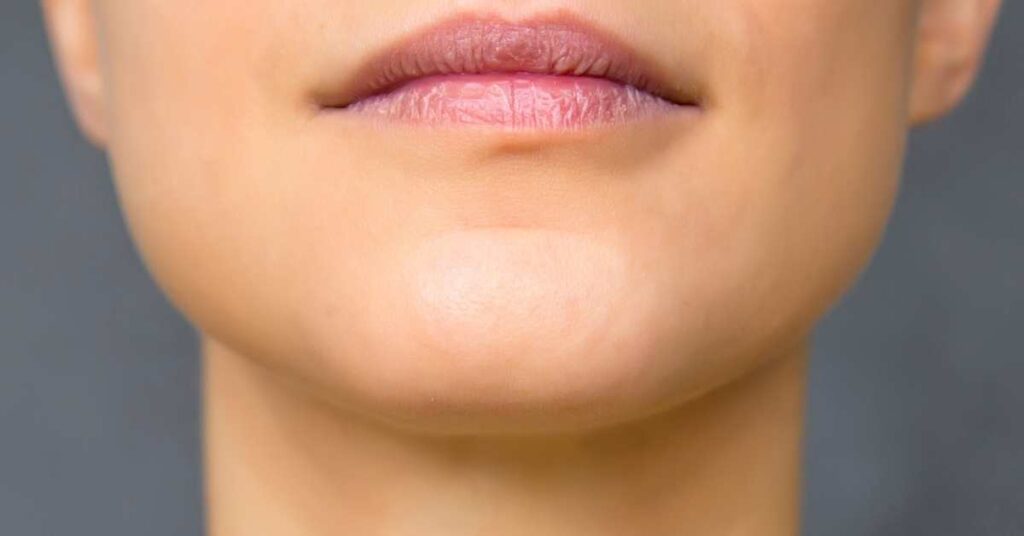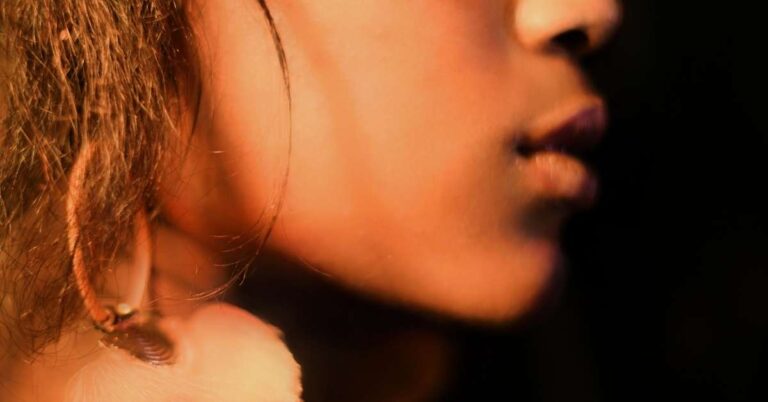Can Mewing Fix A Receding Chin?
Weak jaw. Weak chin. Receding chin. No matter what you call it, you probably wish your jawline was more chiseled. There are extreme measures you can take (like surgery) for this problem, and they may be necessary for some people. But many people with a receding chin would like to be able improve it at home, with something like mewing. So can mewing really help your chin?
Mewing can help fix a receding chin. In fact, fixing a receding chin and jawline is one of the main goals of mewing. Mewing will not work as quickly as other techniques like surgery, but overtime, it can help make your chin and jaw look more defined.
If you’re looking for a quick fix for a receding jaw, you may need to consider alternatives. But if you would like to learn a healthy DIY technique that can also help improve your breathing and your appearance, especially that of your weak chin, keep reading.

What Is Mewing?
Mewing is a practice stemming from orthotropic dentistry. This type of dentistry looks at the lifestyle and environmental causes of malocclusions, which is the fancy word for crooked teeth and bites (ie, what you typically get braces for). This type of dentistry focuses on how the face develops, as well as using minimally invasive techniques to help foster proper development (and fix problems once they’ve developed). It was pioneered by Dr. John Mew starting in the 1960s, and his son Mike Mew continues this work today (hence the term ‘mewing’).
Orthotropic dentistry often uses removeable expanders to widen the upper arch of the mouth and pull the lower jaw forward (ie, to make the jaw stronger and more attractive). Mewing is a way to take these practices and apply them at home.

There are many facets to mewing, but the main goal is to move the craniofacial structure (ie, your face) up and forward. When this is done properly, not only will the person look better, but they will also have more airway space for breathing, which may help with snoring, sleep apnea and other similar issues.
The primary focus of mewing is on proper tongue posture and nasal breathing. Tongue posture is just as important as regular posture, and it can also help you maintain better overall posture (which is another way mewing can help improve your overall appearance and health). When you are practicing mewing, you should place your entire tongue up against the roof of your month. And I mean your entire tongue, including the back third. A lot of newbies will just move the very tip of their tongue up, which won’t create any positive effects.
Learn more about where to put your tongue while mewing here.
Mewing also focuses on building strong jaw muscle tone from hard chewing (think carrots, not oatmeal), as well as maintaining correct body posture with your back up and chin slightly tucked (ie, the opposite of how you sit when you’re looking at your phone). Both of these can definitely make your receding chin look a lot better.
If you’d like to learn more about the specifics of how to mew, please see here. Otherwise, let’s jump into how it can specifically help your chin.
Can Mewing Help Your Chin?
So mewing sounds great, but what can it do for your weak chin? Well, here’s where mewing really shines. The practice of mewing is all about improving the appearance of the chin (among other objectives).
Doctors like the Mews focus on the fact that modern humans have a great variety of chin shapes, while our ancestors (of all races and both genders) all had uniform chin shapes (source). Early humans had chins that were all much bigger and much more chiseled than our own. Our genes haven’t changed that much (I mean, we’re still human), which suggests that it’s our lifestyle that affects our chins and facial structure as much as anything else.
So if you breathe through your mouth all the time, and you keep your mouth open and slack, and your tongue loose, then you are going to have a weaker chin. These small things compound over time, so that eventually your muscles and your facial structure get weaker and start to pull down. Hello, receding chin. Add a little weight gain, there’s a double chin on top of that.
Dentists like the Mews like to work with younger children. While children are growing they are much more malleable. But take heart. The bones in the face are help together by fibrous fibers called sutures sutures, some of which don’t fuse until you’re 70 (!). Since your sutures aren’t fused together, new bone can be made around them, even when you’re an adult (source).

So just like using your muscles improperly can cause your facial structure and chin to weaken over time, the reverse is also true. Using your muscles properly can help you look better and can help improve your receding chin.
According to Mike Mew, “facial appearance is not as set in stone as I think we sometimes feel that it is. You can change it, and you can change it for the positive, but it’s hard work and it takes time.”
Mewing Chin Exercises
As discussed, you can think of mewing in general as an exercise for fixing receding chins. So the first mewing exercise for a receding chin is just, well, mewing. So, with good posture and your chin slightly tucked, close your mouth and bring your teeth together so that they’re super close but not quite touching (Mew calls this the ‘butterfly touch’). And then you press your entire tongue firmly up against the roof of your mouth. It’s really important to get the back of the tongue, and to really press up into your hard palate. You’re trying to use the force of your tongue to actually create more space in your facial structure.
If that sounds implausible, it’s because we tend to think of bones as immoveable, unchangeable structures. And of course they are very good at resisting short high forces. But as Dr. Mew explains in this video, bone is very susceptible to long term forces. For example, fine blood vessels in the brain can leave a deep grove on the tough cortical bone that protects the skull.
“It always surprises me just how moveable bone is,” he says.
If you’re under the age of 25 and you are mewing properly, then you might see changes quickly – but ‘quickly’ is relative when we are talking about mewing. This is a lifestyle change, not a quick fix. So even if you’re young, it will still take months or years to see results.
Older adults will have a bit of a harder time fixing their receding chin, but it can be done (within limits of course – noting that there are surgeries and other interventions you can explore if your receding chin is severe and/or causing other problems, or if you would just like to fix the problem sooner). It’s just going to take a bit longer. Mewing is a lifelong practice (like yoga), and mewing into your adulthood will help keep your face and chin attractive and functional as you age. So even young people who achieve their desired look through mewing should keep going.
You learn more about how to do mewing properly here.
There are a few more exercises you can try to help fix your receding chin. First, while mewing as described above is focusing on your midface and palate, you can also work to strengthen your jaw muscles. You do this by eating harder, chewier food, and making sure to swallow properly. You can also chew hard gum like this.
Note that you can overdo it with the chewing, especially at first. And it can be detrimental to just build up your jaw muscles without also mewing, so make sure you’re doing both.
Finally, the Mackenzie Chin Tuck is another good exercise for your chin and jaw (and overall posture).
Final Thoughts
Mewing won’t fix a receding chin as quickly as surgery and other techniques. And you have to do it properly for it to work. But by pulling your face forward and strengthening your jaw, it can help your chin look much more defined. And as a bonus, while you are mewing, your chin will also look much better (just take a look in the mirror while you’re doing it, and you’ll see!).





